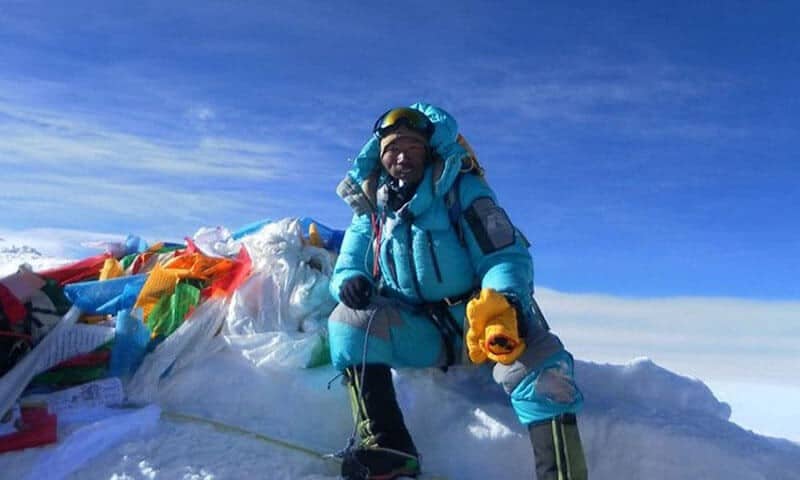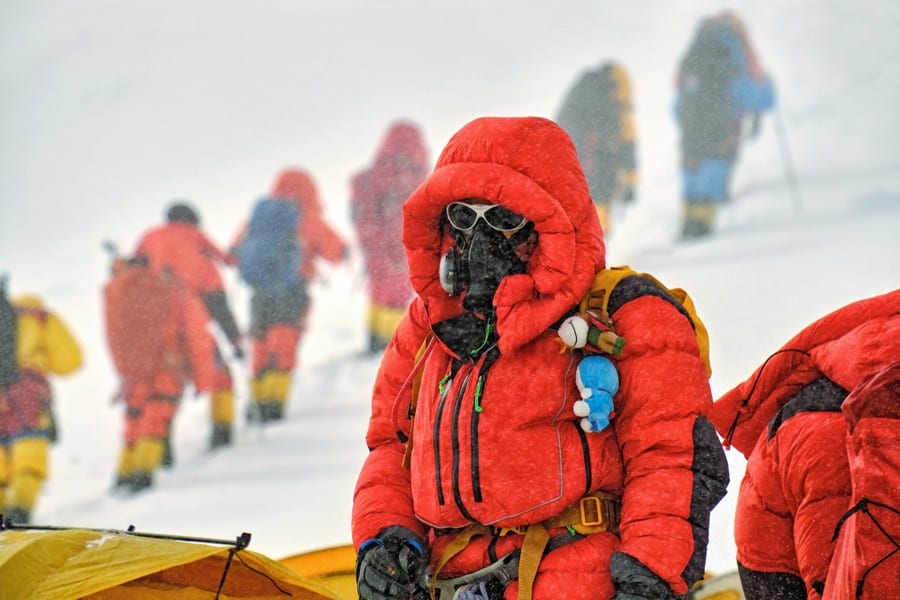
Mount Everest is the highest mountain in the world, standing at 29,032 feet (8,848 meters). This massive peak is part of the Himalayan mountain range, a chain of mountains that spans five countries: Bhutan, China, India, Nepal, and Pakistan.
The seven summits, from highest to lowest, are as follows:
- Asia: Everest (29,032’/8,848m)
- South America: Aconcagua (22,834’/6,960m)
- North America: Denali (20,310’/6,190m)
- Africa: Kilimanjaro (19,341’/5,895m)
- Europe: Elbrus (18,513’/5,642m)
- Oceania: Carstensz Pyramid (16,023’/4,884m)
- Antarctica: Vinson (16,050’/4,892m)
Everest surprisingly attracts both experienced climbers and beginners. However, climbing Everest requires significant preparation and skill, including the use of technical climbing gear like ropes, harnesses, crampons, and ice axes.
Here are 12 facts about Mount Everest:
1. Mount Everest is not the farthest point from the center of the Earth.
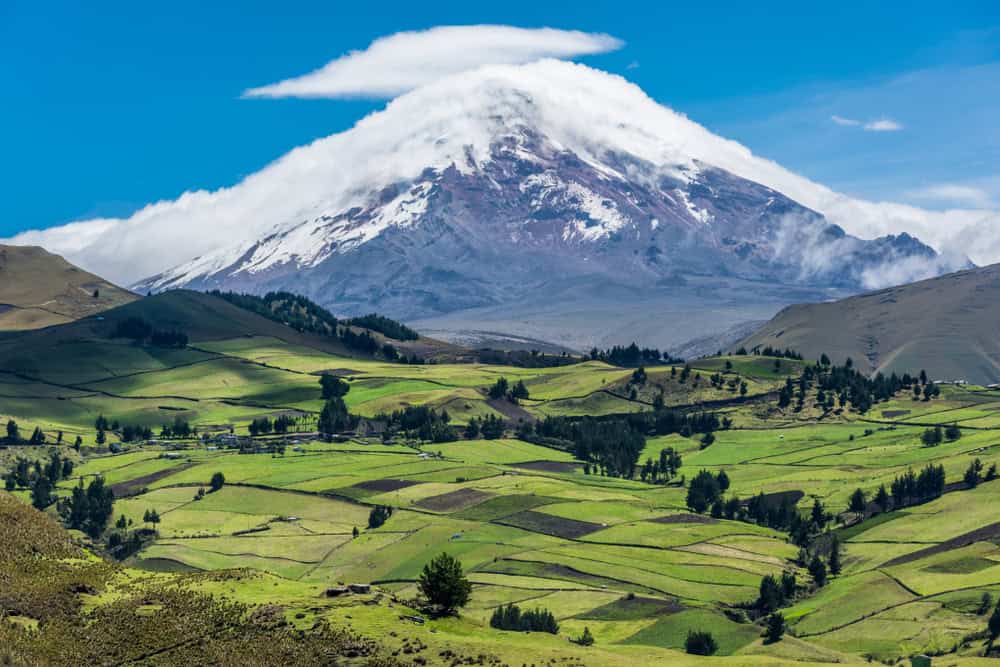
Mount Everest is universally known as the highest point above sea level. However, it is not the farthest point from the center of the Earth. This distinction belongs to Mount Chimborazo in Ecuador, due to the Earth’s equatorial bulge.
The planet is not a perfect sphere; it is flattened at the poles and bulges at the equator. This shape causes locations near the equator to be farther from the center of the Earth than locations further north or south. Mount Chimborazo, located just one degree south of the equator, benefits from this bulge. Despite its peak being only 20,564 feet (6,268 meters) above sea level, Chimborazo extends about 1.2 miles (2 kilometers) farther from the Earth’s center than the summit of Everest.
2. Everest was formed by tectonic activity.
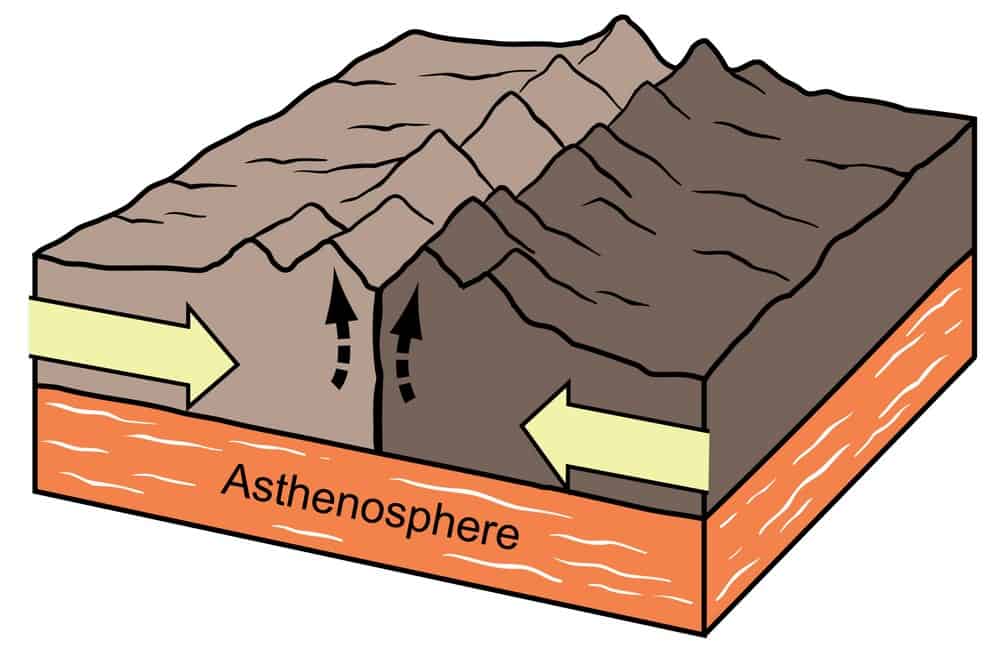
The Himalayan range was formed by the collision of the Indian and Eurasian tectonic plates. This process began around 50 million years ago and continues today, causing the mountain to rise slightly each year. The relentless movement of these plates results in the uplift of the Himalayan region by about 0.2 inches (5 millimeters) annually.
The mountain is primarily composed of sedimentary and metamorphic rocks, which were originally part of the ocean floor before being thrust upwards. Everest’s geological activity also leads to frequent earthquakes in the region, adding to the mountain’s dynamic and ever-changing nature.
3. The mountain was first measured in 1856.

Everest was first measured in 1856 by a team led by Sir George Everest, the Surveyor General of India from 1830 to 1843, after whom the mountain is named. It was initially referred to as Peak XV and later recognized as the highest peak on Earth. The Great Trigonometric Survey of India, which began in the early 19th century, aimed to measure the entire Indian subcontinent with scientific precision. This monumental project culminated in the discovery of Everest’s height.
Sir George Everest’s successor, Andrew Waugh, completed the measurement and proposed naming the peak after his predecessor. Despite controversy and opposition from local populations who had their own names for the mountain, the name Everest was officially adopted. The mountain’s height has been remeasured several times since then, with the latest official measurement being 29,032 feet (8,848.86 meters), slightly higher than previous measurements due to improved technology and methods.
4. Everest has two main climbing routes.

The two main routes to the summit are the Southeast Ridge from Nepal and the Northeast Ridge from Tibet. The Southeast Ridge is the more popular route, first successfully climbed by Sir Edmund Hillary of New Zealand and Tenzing Norgay, a Sherpa of Nepal, in 1953. This historic ascent marked the beginning of modern mountaineering on Everest and remains a significant achievement in the history of exploration.
The Southeast Ridge route begins at Everest Base Camp on the south side of the mountain, at an altitude of 17,598 feet (5,364 meters). Climbers then make their way through the Khumbu Icefall, Western Cwm, and Lhotse Face before reaching the South Col and ascending the final ridge to the summit. This route is known for its challenging icefalls and crevasses, requiring climbers to navigate with great caution and skill.
The Northeast Ridge route, which starts from the north side in Tibet, was first successfully climbed by a Chinese team in 1960. This route is less frequented due to its political and logistical challenges, but it offers a unique perspective on the mountain and its surrounding landscape. The ascent begins at the North Base Camp at an altitude of 16,732 feet (5,100 meters) and involves traversing the East Rongbuk Glacier, the North Col, and the Northeast Ridge before reaching the summit.
5. The death zone poses extreme dangers.
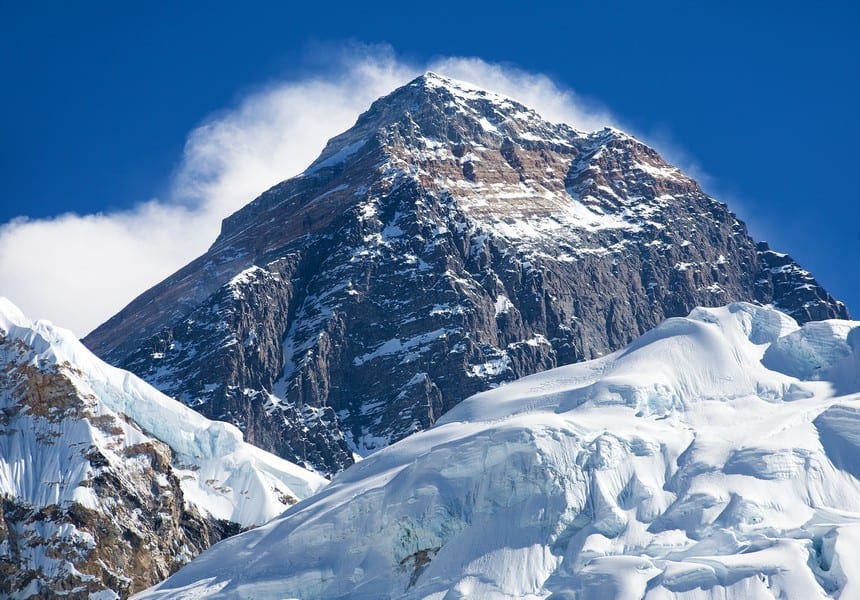
The area above 26,247 feet (8,000 meters) is known as the “death zone,” where the oxygen level is insufficient to sustain human life for extended periods. Nearly all climbers must use supplemental oxygen to survive in this hostile environment. The lack of oxygen can lead to severe altitude sickness, causing symptoms such as confusion, loss of coordination, and even hallucinations.
The death zone also poses other risks, such as extreme cold and high winds. Temperatures can drop as low as -76°F (-60°C), and winds can reach speeds of over 200 mph (322 km/h), creating wind chills that can freeze exposed skin in minutes. The combination of low oxygen, severe weather, and physical exhaustion makes the death zone one of the most perilous parts of the climb. The temperature at the summit never rises above freezing, averaging -31 degrees Fahrenheit (-35 degrees Celsius) in winter.
Ascents aim to minimize time spent in the death zone. Climbers typically make a final push for the summit from a high camp located just below this critical altitude. Despite these precautions, the death zone remains a serious challenge, and many climbers have died in their quest to reach the summit.
6. The Khumbu Icefall is one of the most dangerous sections.
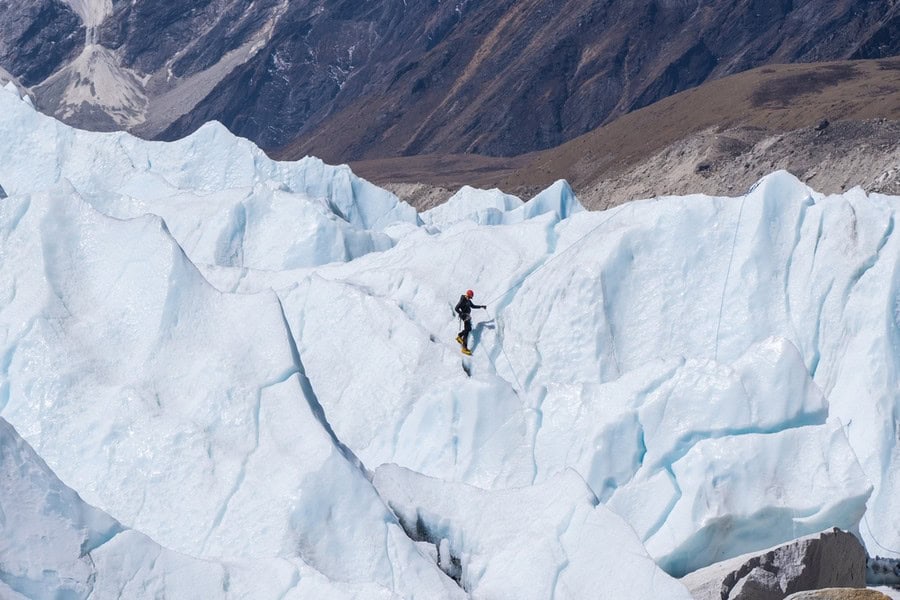
The Khumbu Icefall, located near Everest Base Camp on the Nepal side, is one of the most treacherous sections of the climb. It consists of constantly shifting ice towers, known as seracs, and deep crevasses, posing high risks to climbers. The icefall is formed by the movement of the Khumbu Glacier, which flows down from the Western Cwm and the slopes of Everest.
Navigating the Khumbu Icefall requires the use of ladders and ropes to cross the crevasses and ascend the steep ice walls. Climbers must move quickly and carefully to avoid being caught in an icefall or avalanche. The icefall is most stable in the early morning when temperatures are colder, reducing the risk of ice collapse.
Despite the dangers, the Khumbu Icefall is a crucial part of the Southeast Ridge route, and climbers must pass through it multiple times during their ascent and descent. The route through the icefall is maintained by the Icefall Doctors, a team of highly skilled Sherpas who set and maintain the ladders and ropes. Their work is essential to the safety of climbers, and they are highly respected for their expertise and bravery.
7. Sir Edmund Hillary and Tenzing Norgay were the first to summit.
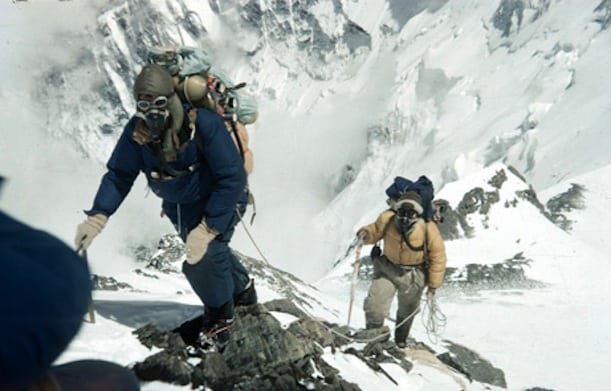
The first officially recognized and confirmed ascent of Mount Everest was achieved by Sir Edmund Hillary from New Zealand and Tenzing Norgay, a Sherpa of Nepal, on May 29, 1953. This event captivated the world and marked a significant milestone in the annals of human achievement. Their climb was part of a British expedition led by Colonel John Hunt, which finally surmounted the world’s highest peak after numerous previous attempts by various expeditions had failed.
However, the narrative of the first ascent of Everest holds a layer of mystery and enduring controversy due to the earlier 1924 expedition involving British mountaineer George Mallory and his climbing partner Andrew “Sandy” Irvine. Mallory and Irvine disappeared on Everest on June 8, 1924, during their attempt to reach the summit. The ultimate fate of the pair was unknown until 1999 when Mallory’s body was discovered high on Everest’s north face, but the discovery did not provide conclusive evidence as to whether they had reached the summit before their demise. Mallory was found with severe injuries and without the camera that he had reportedly carried to photograph the summit—a key piece of evidence that could potentially prove they had summited before perishing on the descent.
The question of whether Mallory and Irvine might have been the first to summit Everest remains one of mountaineering’s greatest mysteries.
8. Everest has a high failure rate.
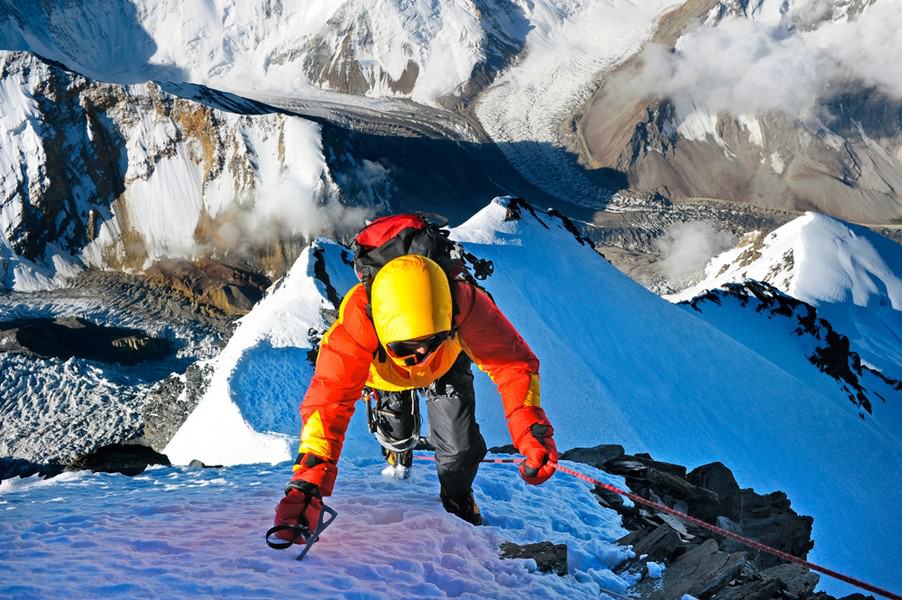
Despite the increasing number of climbers, about 25% of those who attempt Everest fail to reach the summit. Common reasons include altitude sickness, extreme weather, and physical exhaustion. Climbing Everest requires not only physical fitness but also mental fortitude and careful planning.
Altitude sickness, also known as acute mountain sickness (AMS), is one of the most common reasons for failure. Symptoms include headaches, nausea, dizziness, and shortness of breath. Severe cases can lead to high-altitude cerebral edema (HACE) or high-altitude pulmonary edema (HAPE), both of which can be fatal if not treated promptly.
Extreme weather conditions, including sudden storms and high winds, can force climbers to turn back. The physical demands of the climb, combined with the cold and altitude, can lead to exhaustion and injuries. Proper acclimatization, training, and preparation are essential to increase the chances of success.
Climbers must also choose the right time and route for their ascent.
9. Everest’s death rate has been declining.

The death rate on Mount Everest is now approximately 1%. This reflects significant advancements in technology and climbing practices over the years which has improved the safety for climbers. This can largely be attributed to enhanced climbing gear, more accurate weather forecasting, and better overall support for climbers.
Today’s gear is both lighter and more effective, enabling climbers to move faster and expend less energy, which is crucial in the “death zone” above 26,247 feet (8,000 meters), where human life cannot be sustained for long.
Weather forecasting has also become a critical factor in reducing fatalities. With the advent of sophisticated meteorological technology, climbers can now access real-time weather data. This allows expedition leaders to make informed decisions about when to push for the summit. Avoiding sudden weather changes that could lead to dangerous situations is a crucial planning element that has undoubtedly saved many lives.
Additionally, the infrastructure around Everest climbs is better. The increase in experienced climbing guides and well-established base camps equipped with medical facilities contribute to higher safety standards. Communication systems such as satellite phones and GPS have become standard gear, ensuring that climbers can maintain contact and receive updates on weather conditions and other critical information.
10. Many bodies still remain on the mountain.

Mount Everest holds a somber record: the mountain is the final resting place for approximately 300 climbers, whose bodies remain entombed in its icy embrace. This grim reality serves as a reminder of the mountain’s inherent risks.
The reasons these bodies remain on Everest are multifaceted. The extreme conditions at high altitudes, where most of these deaths occur, make recovery operations difficult and dangerous. The low temperatures and the thin air severely limits the time anyone can spend at such elevations without risking severe health consequences. Moreover, the logistical challenge of retrieving a body in such an environment—often requiring the same arduous, perilous climb that proved fatal—is considerable. Each recovery mission can also put the lives of rescuers at significant risk, making such operations rare and highly deliberated.
Many of the bodies are located in the death zone. Some of these remains have become macabre landmarks, serving as waypoints for climbers aiming for the summit. Perhaps the most well-known of these was the body of “Green Boots,” an Indian climber who perished in 1996 near the summit until his remains were reportedly moved or buried in recent years.
11. Everest’s summit has a unique marker.

At the summit of Everest, climbers will find a small tripod and various offerings left by previous climbers. These items are part of the traditional rituals performed by Sherpas, who consider the mountain sacred. The summit is also marked by a survey marker placed by the Chinese government during one of their expeditions.
The tripod at the summit is used for survey measurements and is a popular spot for climbers to take photos. The offerings left by climbers include prayer flags, small statues, and other tokens of respect. These items reflect the deep spiritual significance of Everest in the local culture.
12. The highest-altitude airport is nearby.
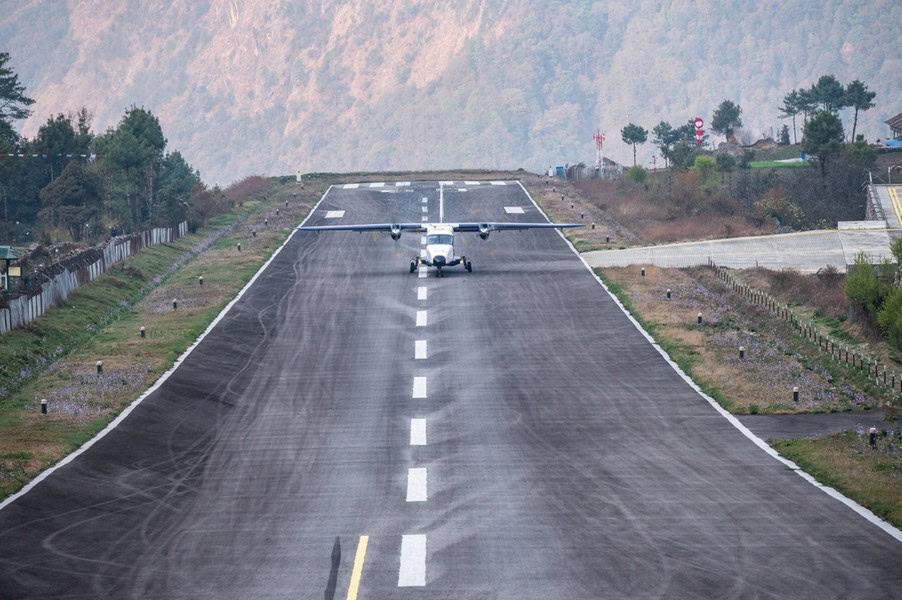
Tenzing-Hillary Airport in Lukla, Nepal, is the gateway for many Everest expeditions. It is known for its short runway and challenging landing conditions, making it one of the world’s most dangerous airports. The airport is perched on a steep hillside at an altitude of 9,334 feet (2,845 meters), with a runway just 1,729 feet (527 meters) long.
The airport was named after Sir Edmund Hillary and Tenzing Norgay. It was built in 1964 by Sir Edmund Hillary to facilitate access to the Everest region.
Flights to Lukla are often delayed or cancelled due to poor weather conditions, adding an element of uncertainty to any expedition. Pilots require special training and experience to navigate the difficult approach and landing.
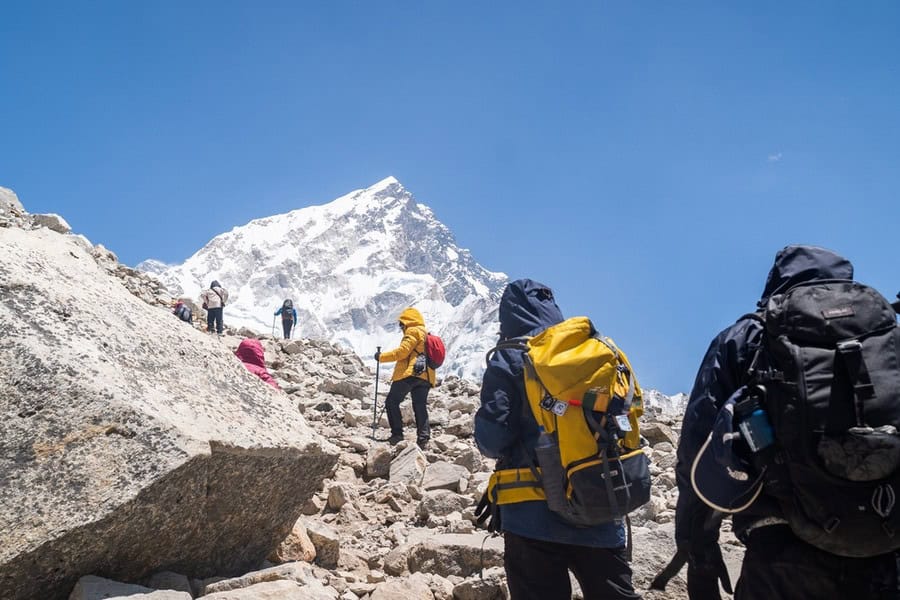
Incredible Feats on Everest
1) Fastest Ascent: Lakpa Gelu Sherpa’s record-setting ascent of Mount Everest in 2003 remains one of the most remarkable achievements in the history of mountaineering. He completed the climb from base camp to the summit in a mere 10 hours and 56 minutes. His rapid ascent shattered previous records and highlighted the exceptional capabilities of Sherpa climbers on Everest.
2) Youngest Climber: In 2010, Jordan Romero, a young American mountaineer, reached the summit of Mount Everest at the age of 13. His successful ascent challenged preconceived notions about the limitations of age in achieving such demanding physical feats.
3) Oldest Climber: Yuichiro Miura of Japan set a remarkable record in 2013 when he reached the summit of Mount Everest at the age of 80. The ascent was a powerful message that age can be just a number, not a barrier to achieving extraordinary goals.
4) Most Summits: Kama Rita Sherpa at the age of 54 has summited Mount Everest an astounding 30 times, holding the record for the most ascents of the world’s highest peak. His first summit was in 1994 and his most recent summit was in May 2024.
